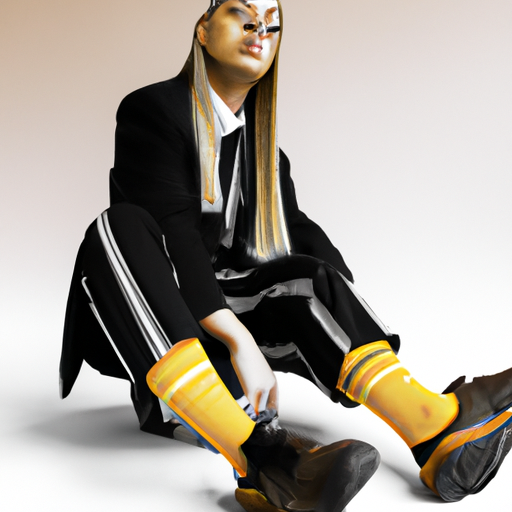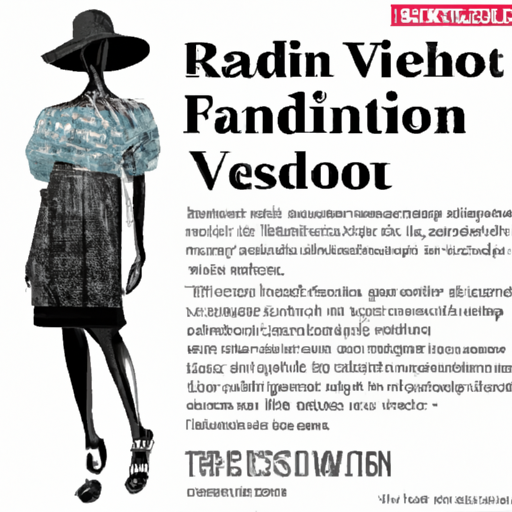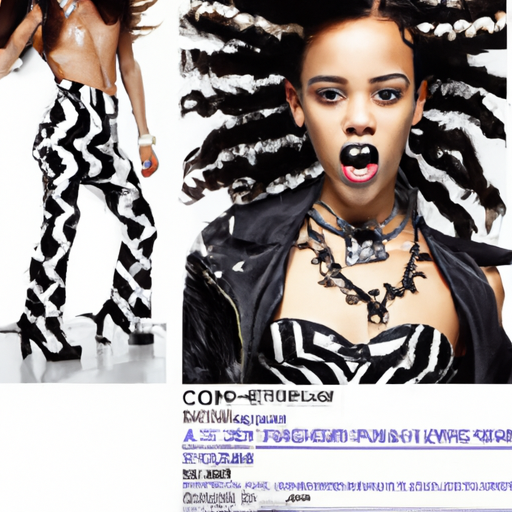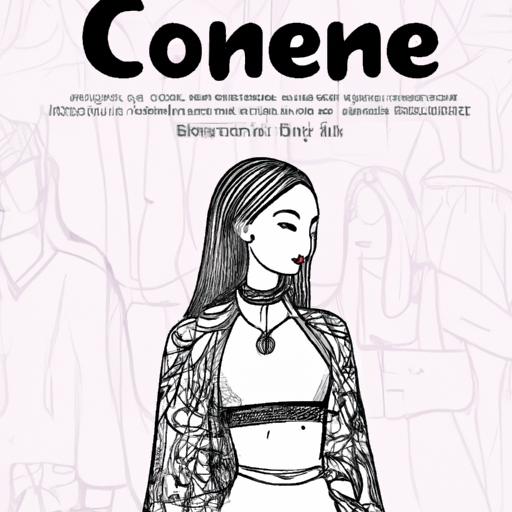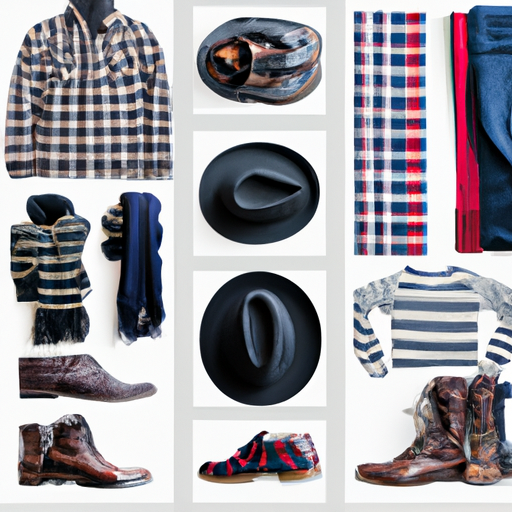What Is Fashion Trends?
Fashion trends are ever-evolving and constantly shaping the way we dress and express ourselves. From the timeless elegance of classic styles to the bold statements of the latest runway shows, fashion trends play a significant role in our lives. Whether you follow the latest trends religiously or prefer to set your own style, understanding what fashion trends are and how they influence the industry can provide valuable insight into the world of fashion. In this article, we will explore the concept of fashion trends, uncover their significance, and discover why they continue to captivate our attention. Get ready to embark on a journey into the dynamic world of fashion trends!
Table of Contents
What Is Fashion Trends?

Definition of fashion trends
Fashion trends refer to the popular styles, designs, colors, and aesthetics that are adopted by masses of people within a specific time period. These trends are constantly evolving and changing, influenced by various factors such as social, cultural, economic, and technological aspects. Fashion trends encompass all aspects of clothing, accessories, footwear, hairstyles, makeup, and even attitudes or behaviors associated with a particular fashion style.
Importance of fashion trends
Fashion trends have a significant impact on society, as they play a crucial role in shaping and reflecting the prevailing cultural and social values. They provide individuals with a way to express their identity, creativity, and personal style, while also allowing them to conform or adapt to the prevailing standards of beauty and style. Fashion trends also contribute to the economy, as the fashion industry generates billions of dollars each year through the production, sale, and consumption of trendy clothing and accessories.
Factors influencing fashion trends
Fashion trends are influenced by a wide range of factors, including social, cultural, economic, and technological elements. From celebrity endorsements to social media trends, there are various factors that shape the fashion landscape. Some of the key factors influencing fashion trends include:
Social Factors:
- Cultural and societal values
- Peer pressure and influence
- Media and advertising
- Historical events and movements
Cultural Factors:
- Traditional customs and practices
- Cultural diversity and globalization
- Ethnic and regional influences
- Subcultures and countercultures
Economic Factors:
- Disposable income and purchasing power
- Fashion industry and market trends
- Price and affordability
- Economic growth and recession
Technological Factors:
- Innovation in fabric, textiles, and manufacturing processes
- E-commerce and online shopping
- Social media platforms and digital marketing
- Collaborations between fashion and technology industries
Types of fashion trends
Fashion trends can be broadly categorized into several types, each having its own distinctive characteristics.
Seasonal Trends:
These trends are influenced by the changing seasons and weather conditions. For example, in the summer, lightweight fabrics, bright colors, and floral prints are often in vogue, while in the winter, cozy, layered outfits and darker, earthy tones are prevalent.
Runway Trends:
Runway trends refer to the styles and designs showcased by fashion designers during fashion weeks and runway shows. These trends often influence the direction of fashion for a particular season, setting the stage for what will be popular in the coming months.
Street Style Trends:
Street style trends emerge from the fashion choices of the general public and are often influenced by subcultures and countercultures. Street style trends are known for their combination of high-end fashion pieces with vintage, thrifted items, creating a unique and individual flair.
Retro Trends:
Retro trends refer to the revival of past fashion styles and eras. From flapper dresses of the 1920s to grunge-inspired looks of the 1990s, retro trends often resurface and gain popularity due to nostalgia and a desire for a different aesthetic.
Fashion trends throughout history
Fashion trends have always played a significant role in history, serving as a reflection of the prevailing social, cultural, and economic climate of a particular era. From ancient civilizations to the modern era, fashion has been used to communicate status, identity, and societal norms. Here are some notable fashion trends throughout history:
Ancient Civilizations:
In ancient Egypt, fashion trends included elaborate headdresses, linen garments, and jewelry adorned with precious stones. In ancient Greece, draped clothing, togas, and sandals were popular, while the Romans favored tunics, draped dresses, and elaborate hairstyles.
Renaissance and Baroque Periods:
During the Renaissance, fashion trends showcased opulence and grandeur, with elaborate gowns, corsets, and intricate embroidery. In the Baroque period, fashion trends were characterized by excessive ornamentation, large wigs, and voluminous skirts.
Roaring Twenties:
The 1920s marked a significant shift in fashion trends, with women embracing shorter hemlines, loose-fitting dresses, and dropped-waist silhouettes. The flapper style became popular, symbolizing women’s liberation and a more relaxed attitude towards fashion.
1960s Counterculture:
The 1960s was a decade of profound social and cultural change, reflected in the fashion trends of the era. The counterculture movement embraced bohemian styles, miniskirts, bell-bottom pants, psychedelic prints, and a more casual approach to fashion.
1990s Grunge:
The grunge fashion trend of the 1990s emerged as a rebellion against mainstream fashion. Influenced by alternative rock music, grunge fashion included flannel shirts, ripped jeans, combat boots, and a deliberately disheveled appearance.
Cultural and geographical impact on fashion trends
Fashion trends are heavily influenced by cultural and geographical factors, as they play a pivotal role in shaping the preferences, tastes, and aesthetics of different regions and communities. Each culture and geographical location has its own unique fashion traditions, which are often influenced by local customs, beliefs, climate, and available resources.
For example, traditional Indian clothing such as sarees and salwar-kameez have distinct designs, vibrant colors, and intricate embellishments that reflect the rich cultural heritage of the country. In contrast, traditional Japanese fashion embraces minimalistic aesthetics, clean lines, and understated elegance, influenced by Zen Buddhism and the concept of wabi-sabi.
Different regions around the world have also contributed significantly to global fashion trends. Paris, often regarded as the fashion capital of the world, has been a center for haute couture and luxury fashion for centuries. Other cities such as Milan, London, and New York also play significant roles in shaping global fashion trends.
Fashion trends vs personal style
While fashion trends provide a guideline for the prevailing styles and aesthetics, personal style allows individuals to express their unique identity and preferences. Fashion trends can be seen as the broader umbrella under which personal style exists, as they set the tone and provide inspiration for individuals to create their own distinctive looks.
Personal style revolves around expressing individuality, creativity, and self-confidence through fashion choices. It allows individuals to mix and match fashion trends with their own personal flair, creating a unique and authentic style that represents who they are.
The role of fashion influencers and celebrities
Fashion influencers and celebrities have a significant impact on shaping fashion trends and consumer preferences. Their style choices and endorsements often have a massive ripple effect, influencing the masses and driving demand for certain fashion trends and products. Social media platforms, such as Instagram and TikTok, have amplified the influence of these individuals, making them powerful trendsetters in the fashion industry.
Fashion influencers and celebrities collaborate with fashion brands, attend fashion events, and showcase their personal style through various media channels. Their influence has also led to the rise of the “fast fashion” industry, as consumers strive to emulate the latest looks worn by their favorite influencers and celebrities.
Fashion trends in different industries
Fashion trends extend beyond clothing and extend into various industries. For example, the automotive industry often draws inspiration from fashion trends when designing car interiors, incorporating trendy colors, patterns, and materials.
The home decor and interior design industry also follows fashion trends when selecting color schemes, patterns, and textures for furniture, textiles, and wallpaper. Similarly, the cosmetics and beauty industry takes cues from fashion trends, reflecting them in makeup color palettes, nail art designs, and skincare packaging.
Fashion trend forecasting
Fashion trend forecasting is a crucial aspect of the fashion industry, as it helps designers, retailers, and marketers anticipate and respond to the ever-changing fashion landscape. Trend forecasting involves analyzing various factors such as cultural shifts, economic indicators, market research, and consumer behavior to predict the upcoming fashion trends.
Fashion trend forecasters often collaborate with designers, retailers, and brands to provide guidance on the upcoming color palettes, fabric choices, silhouettes, and styles for future collections. This process enables fashion professionals to stay ahead of the curve and meet consumer demands effectively.
In conclusion, fashion trends encompass a wide range of styles, designs, and aesthetics that shape the world of fashion and influence society at large. They reflect the prevailing social, cultural, and economic climate and provide individuals with a means of self-expression and creativity. Fashion trends are influenced by various factors and can be categorized into different types, while also being impacted by cultural and geographical factors. Personal style allows individuals to express their unique identity within the broader context of fashion trends. The role of fashion influencers and celebrities is paramount in shaping trends, and fashion trends extend to various industries beyond clothing. Lastly, fashion trend forecasting plays a critical role in anticipating and responding to upcoming trends in the ever-evolving fashion landscape.

